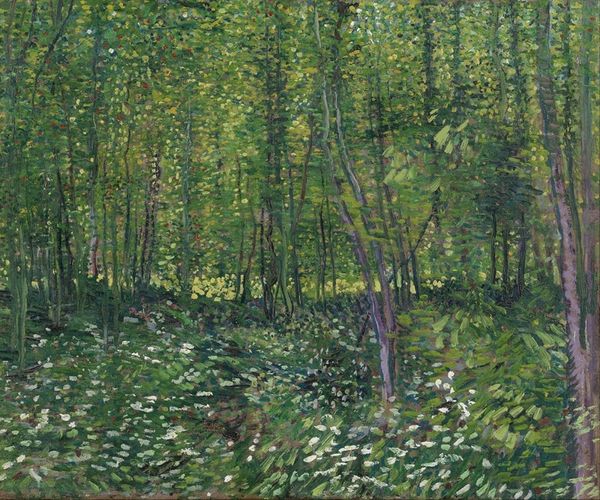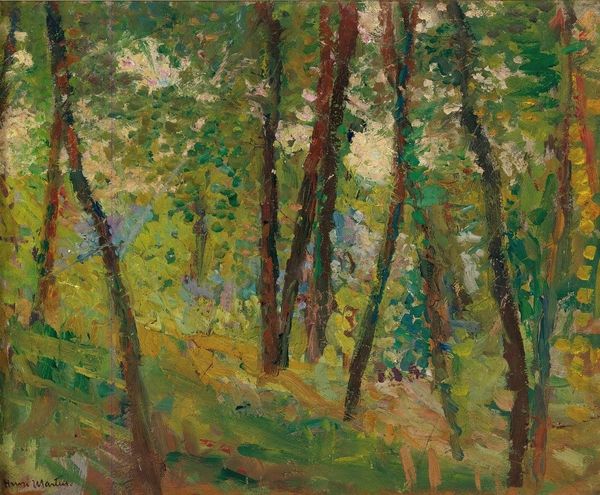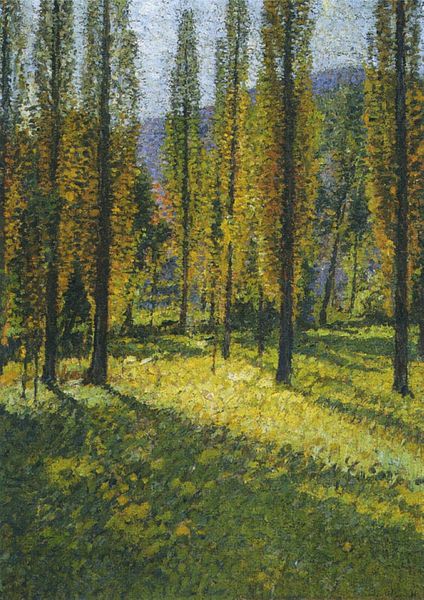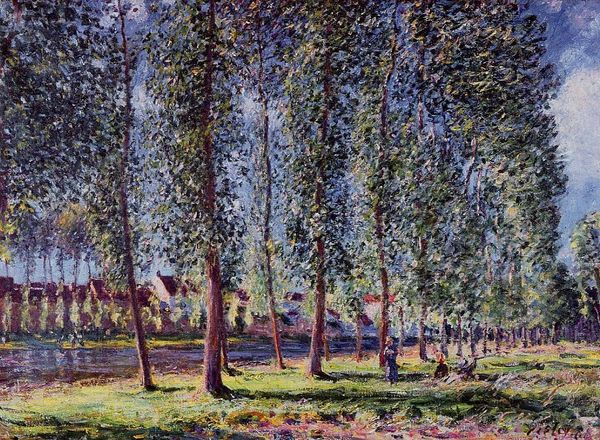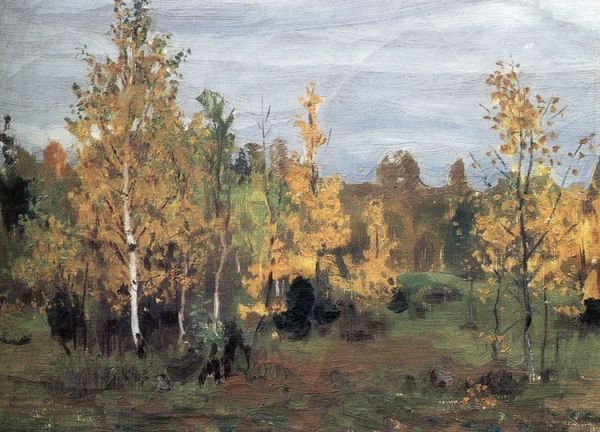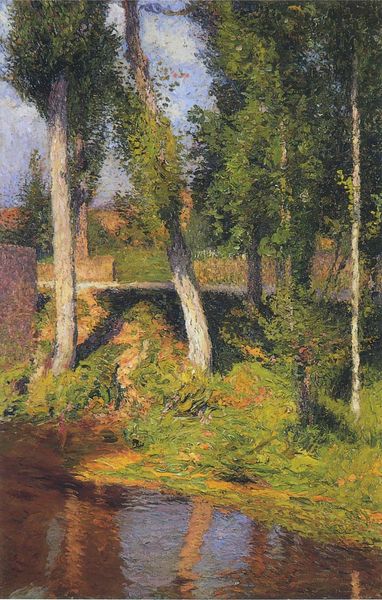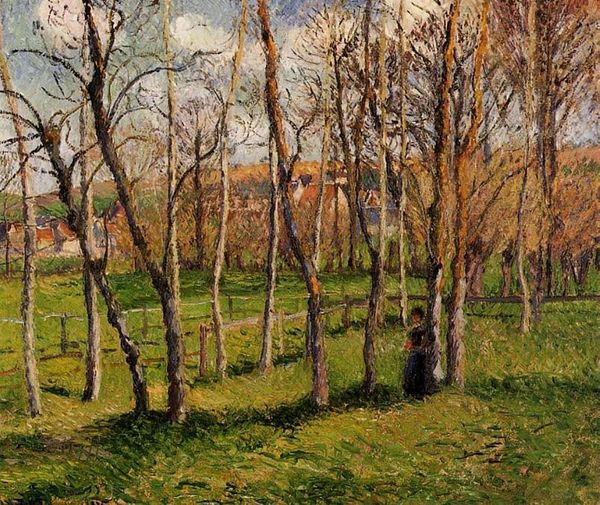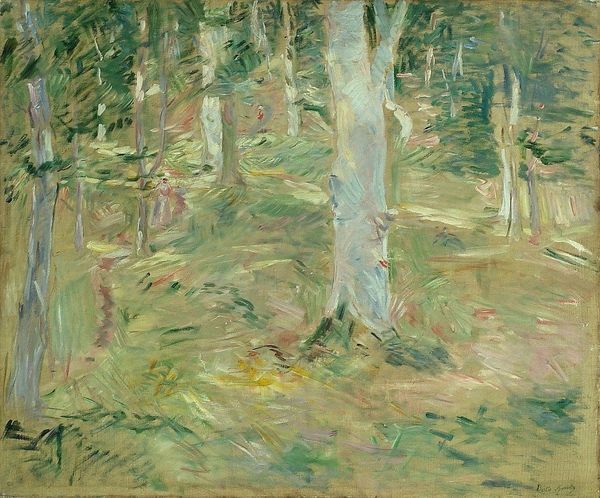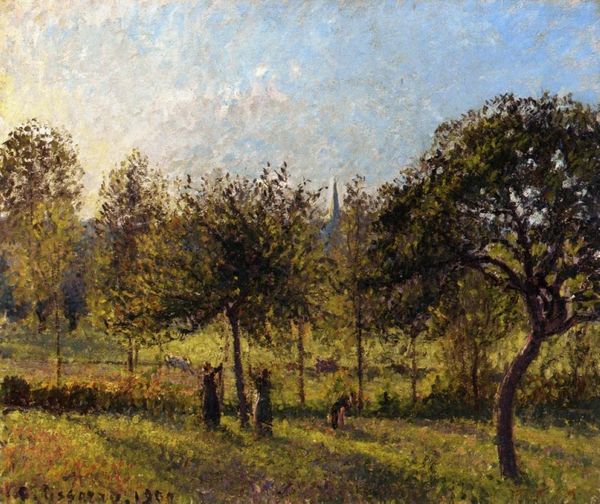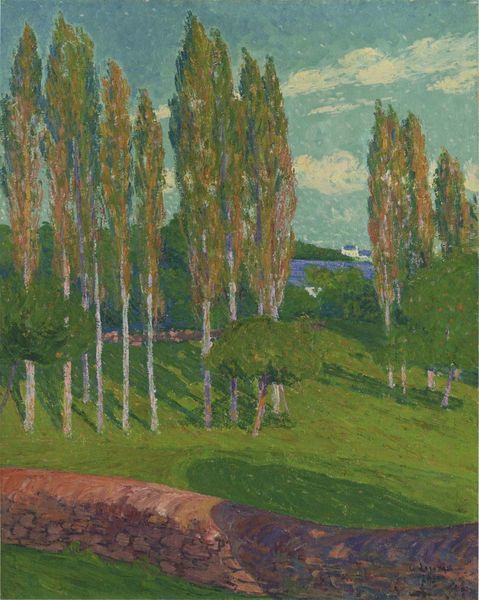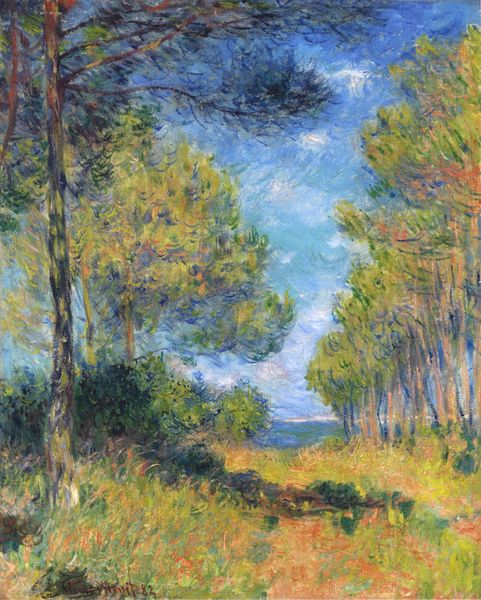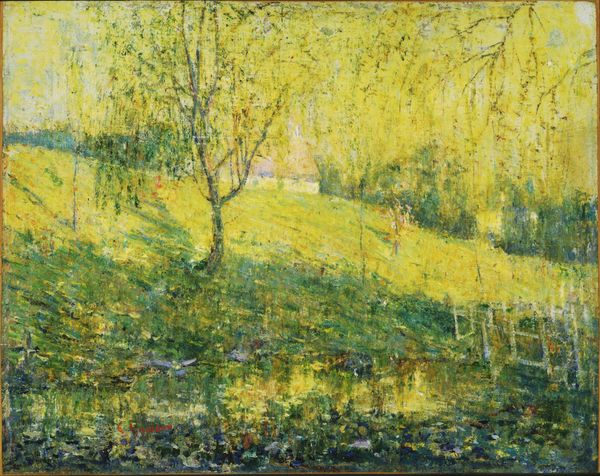
painting, oil-paint, impasto
#
painting
#
oil-paint
#
landscape
#
nature
#
impasto
#
post-impressionism
Copyright: Public Domain: Artvee
Curator: Here we have Christian Rohlfs' "Forest," painted around 1900. What's your immediate impression? Editor: Green. So much green! And textured—you can practically feel the roughness of the bark and the density of the foliage. Curator: Indeed. Rohlfs’s piece arrives amidst rising urban anxieties, aligning with a broader late 19th-century art movement championing the natural world. You see a renewed interest in landscape, not merely as backdrop but as a subject in its own right. Editor: Right, a kind of counter-production against the industrial age? Look at how the paint is built up, layer upon layer; it emphasizes the physical labor and materials—the antithesis of mass production. He really digs into the materiality here. Curator: Precisely. Also consider Rohlfs’s shift toward expressive forms in this period; there is an agency and autonomy visible here from previous academic engagements. He's wrestling with art historical traditions while forging new paths, with each thick impasto stroke. Editor: I like the way he uses light. It's not photorealistic at all, but creates an impression. See the blues shimmering through gaps between leaves—not precisely what's there but what we experience. What was the dominant visual culture at the time? How would this landscape enter and converse with public discourse? Curator: We’re at a point where photography's realism had matured and solidified. For the artist, it wasn't about replication but rather engaging public audiences on questions of how they envisioned an environmental aesthetic, a kind of politics of scenery, if you will. Editor: Very much so. There's a haptic quality that’s very interesting considering its historical moment. It also makes me question accessibility of the natural resource for diverse public audiences—not just leisure for the privileged few. Curator: Right. These scenes were being popularized during an epoch when conversations on resource extraction and preservation had gained substantial traction. Editor: It is a nice rendering with that added historical dimension layered in. I initially reacted to the materiality of that thick, rich paint, but now recognize its critical voice and participation within ongoing discussions about the natural world. Curator: Absolutely. I think looking at "Forest" allows us a window onto the complex dialogue occurring around landscape, production, and environmental awareness at the turn of the century.
Comments
No comments
Be the first to comment and join the conversation on the ultimate creative platform.
